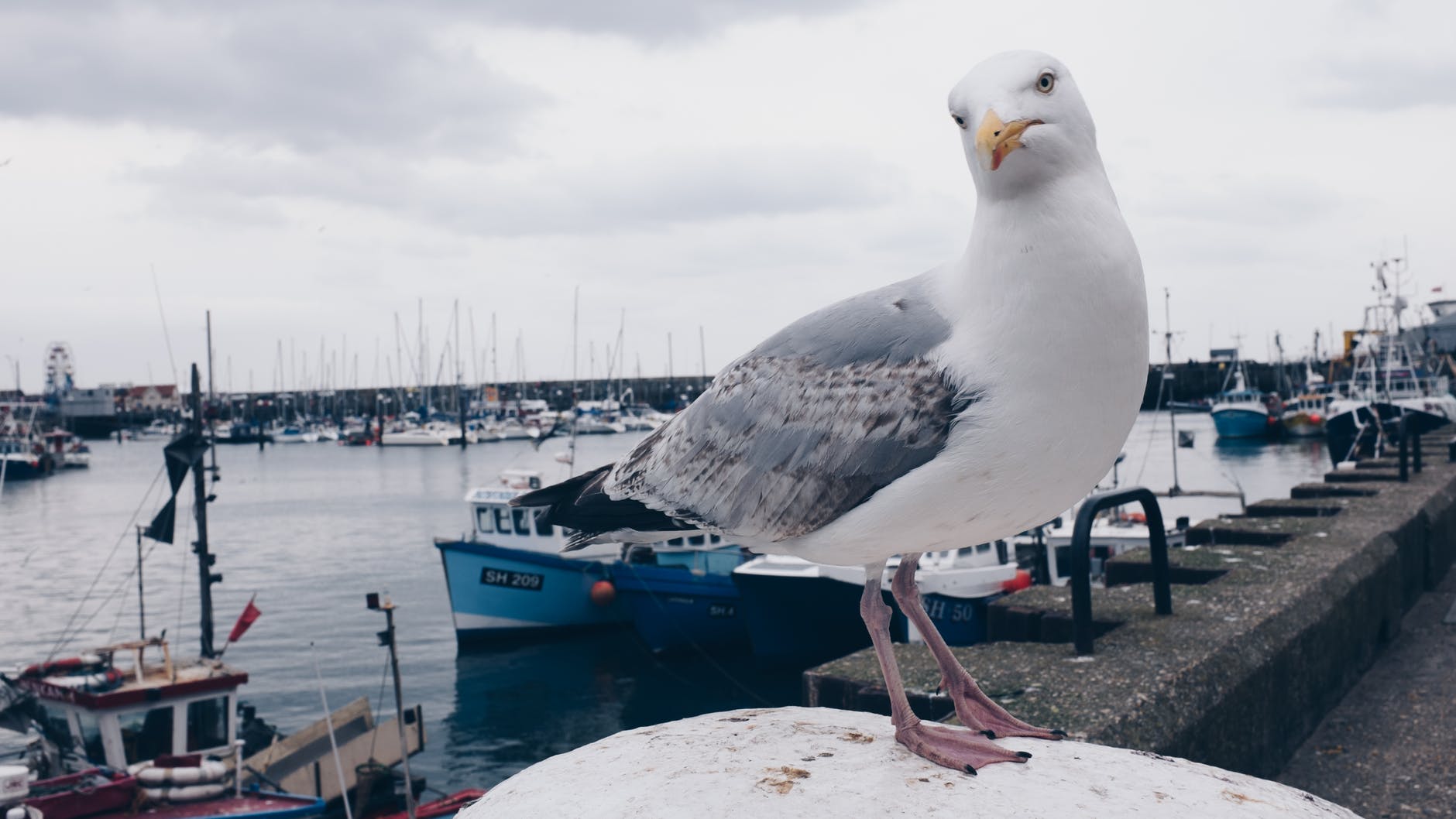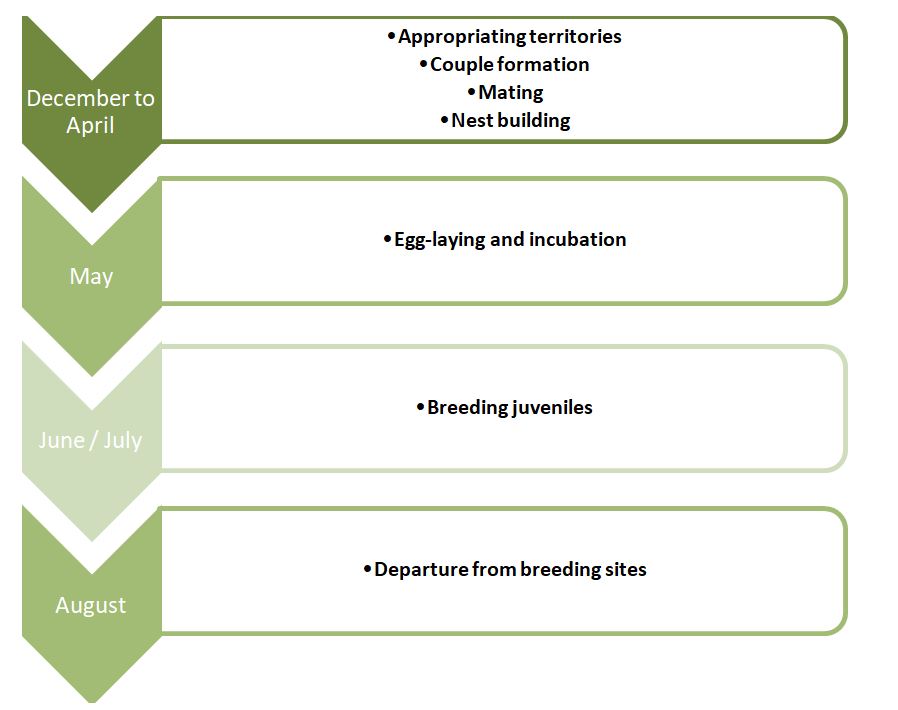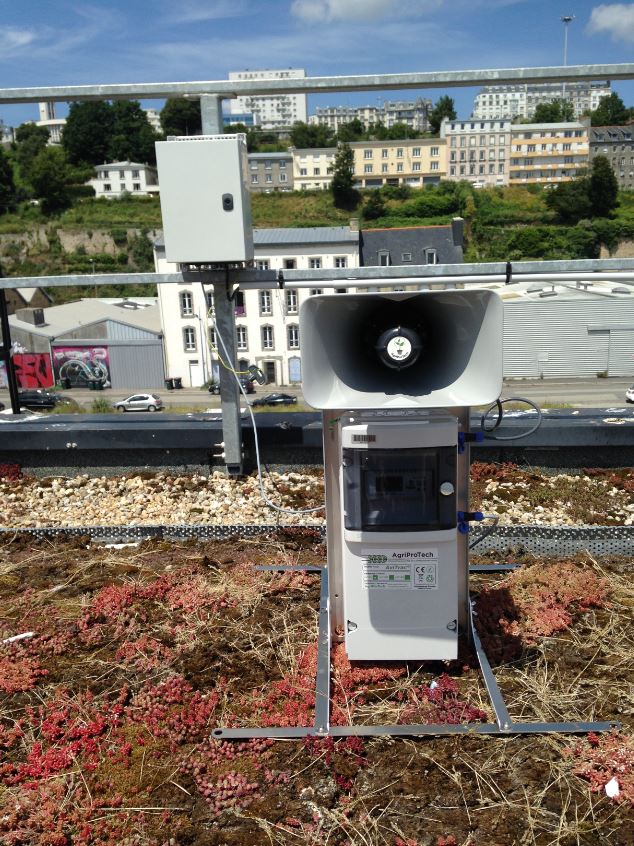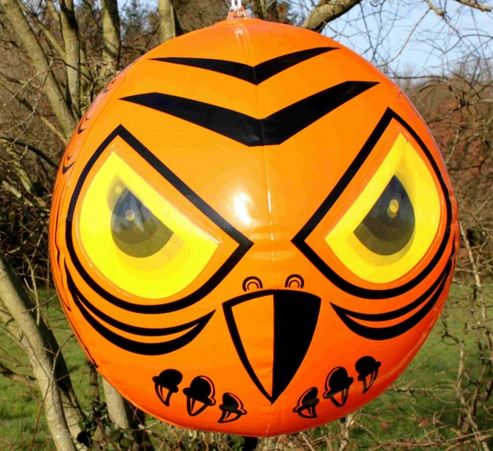
Seasonality of herring gull populations
Herring gulls (Larus argentatus) are mainly found in coastal areas, but can also be found inland.
The proximity of landfill sites and the abundance of food they find in town centres encourage their development in these areas.
They then disperse, usually during August. It is therefore advisable to take early action, from the autumn before they start to settle in.
Apply a few common sense rules
Here are a few common-sense rules to follow to limit the proliferation of these populations:
- Don't feed the gulls. This is one of the main causes of their presence in town centres. This rule also applies to other urban birds (notably rock pigeons).
- Ensure that household rubbish and other waste is inaccessible to gulls. Containers and other bins must be closed.
Inform your local authority
Some towns have specific procedures for dealing with pairs of gulls on their roofs. For examples, Le Havre and Dunkerque in France. Do not hesitate to contact your local council's technical services department to find out what to do in such cases.
As the herring gull is a protected species (in France), repelling them is strictly regulated. Prefectoral decrees may authorise its regulation or the sterilisation of its eggs.
How do you keep them away from a particular area?
Once you have been informed of the legislation in your town, you can put in place methods of keeping them away :
1 – Sound scaring / acoustic repellents
The emission of certain sounds can interfere with the installation of gulls on a roof, for example (the photo below shows the installation of an AviTrac® scarecrow on the roof of a building in the town of Brest (France), to keep gulls away).
The AviTrac® range manufactured by AgriProTech contains specific signals that are effective on seabirds: distress calls, synthetic signals resembling alarms, etc.
Here are a few tips on how to make the best use of sound scares:
- Use only the signals recommended for the species you wish to scare away
- Move the device regularly
- Take the opportunity to change the transmission frequency slightly
- Only transmit when necessary (according to the rhythms of the birds)
2 - Visual repellers
Scaring kites
These kites, like those in the FlyTrac® range, give the impression of the presence of a bird of prey. When the pressure is not too great, they can scare away seagulls over an area of around 500 m².
Be sure to put the system away as soon as winds exceed 45 km / hour.
Scaring balloons
These balloons use the force of the wind to swing around their support and create an impression of movement. Their bright colours scare the birds away. They need to be moved regularly.
3 - "Physical" barriers
AgriProTech rotary spike
This specially shaped spike is a patented system that keeps gulls, pigeons, seagulls and other unwanted birds away.
With a weight at the end of each of its curved shafts attached to a central foot, it rotates with the wind, preventing birds from landing.
These spikes are more expensive to install, but they are durable and require no maintenance.
Do you have any other questions? Any other ideas? Don't hesitate to share your experiences in the comments!












